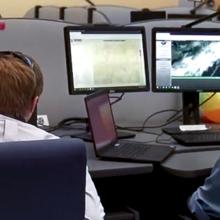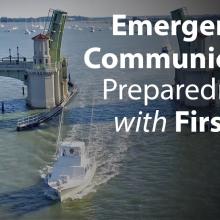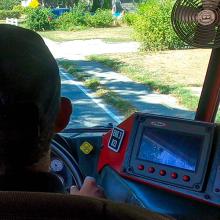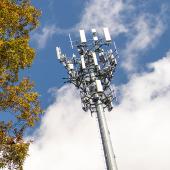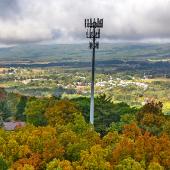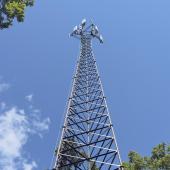The deployables program is unique to FirstNet. FirstNet deployables boost coverage in the aftermath of disasters, during large planned events or incidents, or in remote areas — and are available to subscribers 24/7 at no extra cost. These mobile cell sites link to FirstNet via satellite, do not rely on commercial power availability, and provide similar capabilities and connectivity as a cell tower.
How to request a FirstNet deployable
Public safety agencies on FirstNet don’t have to make the hard decision between staying connected and budget concerns when using FirstNet’s deployables. Subscribers can request deployables without worrying about incurring extra costs or who will pay for them. To request a deployable asset, subscribing agencies should use the online request tool in FirstNet Central or call FirstNet Customer Care at 1-800-574-7000.
Public safety identified need for deployables
As the FirstNet Authority planned for FirstNet, we consulted with public safety who emphasized the need for temporary coverage solutions that are readily available and easily integrated into operations. We ensured deployables were part of the FirstNet solution and each year the deployable program has supported hundreds of public safety operations across the country. In 2020, FirstNet Authority Board authorized investment funds to expand the deployable fleet to meet the increasing demand we heard from public safety.
FirstNet deployables are designed for public safety
As of March 2022, the FirstNet fleet has 150+ deployables located at sites around the country and US territories that can be sent to emergencies in a matter of hours. The FirstNet-dedicated fleet includes:
- More than 100 ground-based Satellite Cells on Light Trucks (SatCOLTs) and Compact Rapid Deployables (CRDs) – SatCOLTs are vehicles with mobile cell sites that connect via satellite and do not rely on commercial power supply, while CRDs are small portable cell sites that can be brought into an area for coverage
- Three Communications Vehicles – A command and communications vehicle for emergency deployments, planned events, and training exercises with a space for two communications personnel with multiple monitors, televisions and charging stations, as well as a large exterior screen and speakers for briefings. It provides connectivity via LTE (Band 14) and/or Wi-Fi and are able to leverage a variety of backhaul options. Equipped with a generator that can run for multiple days before refueling and includes a lavatory, microwave, mini refrigerator and sleeping bunk.
- Three airborne Flying COWs (Cell on Wings) – tethered drones with larger propellers, increased payload capacity, and specialized LTE radios and power systems. Flying COWs can withstand light rain and wind speeds up to 25 miles per hour and reach heights of up to 400 feet, making them ideal for wildfires, mountain rescues, and other missions where terrain previously made it difficult to maintain connectivity.
FirstNet deployables make a difference in public safety operations
Deployables support public safety for disasters, major incidents, and planned events. Deployables have provided public safety with on-demand coverage during the COVID-19 response, at the largest cross-country race in North America, during trainings and exercises, and for response to wildfires, tornados, and hurricanes.
Deployables Resources
 FirstNet Deployables
FirstNet DeployablesDownload a quick summary of FirstNet Deployables.




